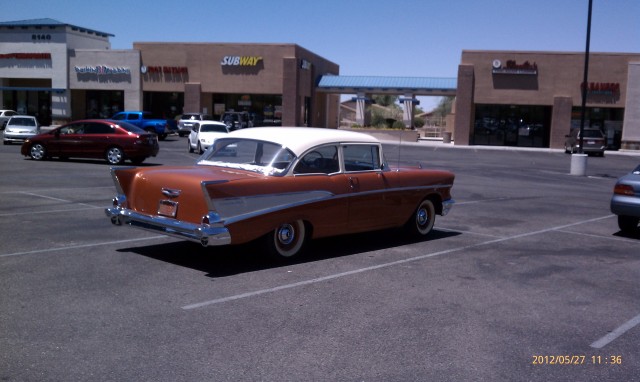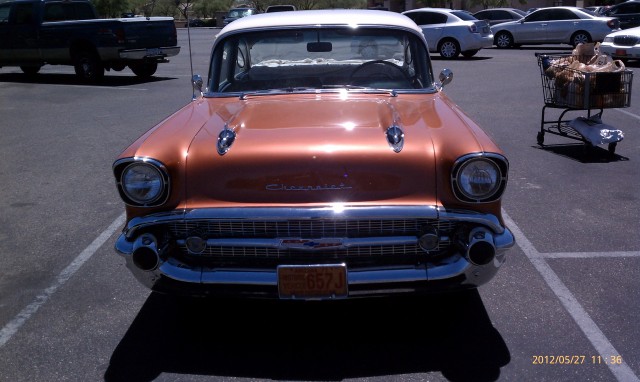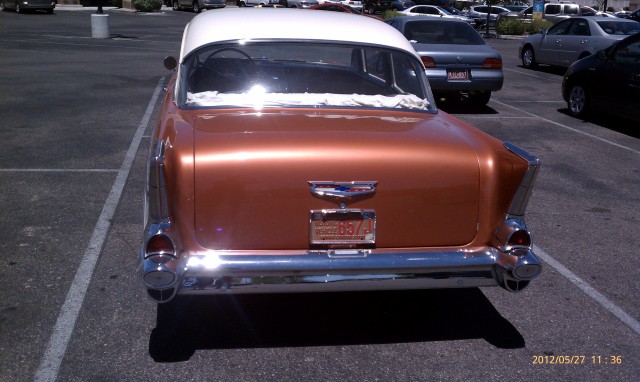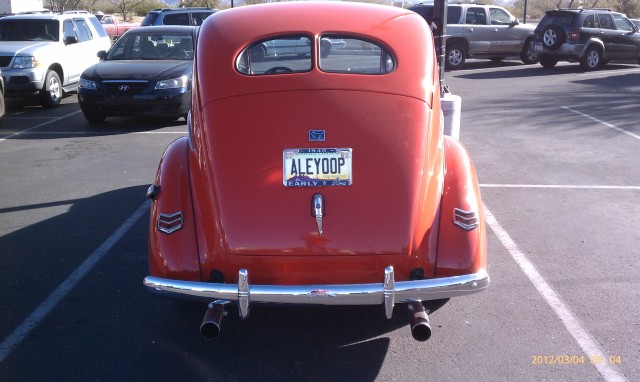http://www.oldcarsweekly.com
Each July the tiny town of Iola, Wis., is invaded by a sea of humanity and old iron. Many in attendance come strictly for the swap meet, which covers about 4,500 spaces.
Old car hobby doing well — at least ‘parts’ of it
By John Gunnell
“Don’t tell me there’s no recovery going on,” said Kurt Kelsey, an Iowa City-based vendor of new-old-stock Pontiac parts. According to Kelsey, his business this year is much better than it has been in a long time. “The phone has been ringing off the hook every day,” he said.
Kelsey’s observation about an up-tick in the market isn’t alone. Positive reports have come from other vendors, parts manufacturers and catalog retailers since late last fall. Despite an unsettled national economy and high unemployment, the old-car parts business seems to be in the midst of a boom.
During a Dynamat seminar at the Hot Rod & Restoration Show in March, company owner Scott Whitaker said one-day shipping of Dynamat automotive insulation products has been impossible to promise lately, because a large increase in orders has outpaced new hiring. “The bump in sales wasn’t expected and caught us off guard,” he said.
In early April, Bob Marx at Marx Parts in Arpin, Wis., came to visit us and he, too, was upbeat about his rising sales. Marx has been growing his inventory of vintage gaskets and rear main seals and is now rebuilding fuel pumps, but he said that new products do not explain all of the growth he is seeing. Like several other industry veterans, Marx pointed to the TV exposure of the Mecum and Barrett-Jackson auctions as a factor that’s helping the hobby grow. “New people are getting involved with old cars,” he said.
“After a winter of inactivity, old cars tend to leak or fail when they are put back on the road,” said Fred Kanter of Kanter Auto Products, who wonders if the business boom might be seasonal. “March, April, May every year, it’s the same thing — spring,” Kanter said. He pointed out that from spring through summer every year, his most popular items are fuel pumps and water pumps. “There’s a lot of factors that affect our business.”
You never know what you’ll see at big swap meets. You might come across a 1958 Edsel Pacer looking for a new home.
Al Suehring of Amherst Junction, Wis., specializes in ring gears and is another vendor who feels that the market is strong. We caught up with him at the Vintage Chevrolet Club of America dinner in Chilton, Wis., and he said that his business from the United States and abroad has been showing noticeable increases lately.
Ray Yager of Classic Industries said the level of growth of reproduction parts sales is “hard to keep up with.” His firm supplies MoPar, 1955-’57 Chevy, Camaro, Firebird, Nova, Impala and Chevy truck parts, and parts sales for these vehicles are moving in a positive direction. Yager thought the company’s 18-month-old MoPar parts catalog may account for some, but not all, of the huge increase in business he’s seeing. At least one vendor who solely deals in Chevrolets is likewise seeing increases in business.
“I’m having a really good year,” said Ron Kellogg of Chevy Tri-Power. “Rather amazing since I’m selling restored multi-carb setups in an era of $5-a-gallon gas prices. I’ve probably sold 25 Tri-Power units — normally a year’s worth — since November 2011.”
Kellogg’s increase proves that car collectors still want high-performance options on their classics.
In addition to new products, increased TV exposure of the hobby and added catalogs, parts suppliers said both the use of the Internet and increased advertising seem to be attracting more customers. Some big companies such as Mid America Motorworks and Eastwood have begun sending daily e-mails to thousands of potential customers. This takes time and money and employees with Internet skills, but their efforts are paying off with increased sales.
Many mom-and-pop operations that can’t afford daily e-marketing efforts are creating websites, Facebook pages, blogs and Twitter accounts to reach the marketplace. Hobby events aimed at professionals — such as the Racing & Performance Expo, the British Motor Trade Association and the SEMA Show — all offer seminars on Internet marketing techniques to these businesses.
As their marketing efforts become more sophisticated, parts sellers are also discovering that they can use print media to drive customers to their websites. Companies that never ran a print ad before are discovering that a clean-looking space ad with the right design and not much text can generate strong client interaction. The right picture of a car can catch the potential customer’s attention and a simple e-mail address or website link is all that’s needed to bring business knocking. A good ad will pay for itself much faster these days.
While an increase in parts sales would suggest that restoration shops and collector car sales are both on the increase, growth in those parts of the hobby isn’t as clear-cut as it is when a part is “checked out” in an online catalog. Collector car dealers such as Colin Comer of Colin’s Classic Auto in Milwaukee and market players such as Joe Bortz are fairly universal in the belief that collector car prices are off 15-20 percent in today’s market. Some restoration shop owners say that they are busier than they’ve ever been, but others say the opposite.
From all of the indications we have seen and all the comments we’ve heard, it appears the old-car parts niche is improving for 2012 and this trend will presumably filter down to other parts of the hobby. The hobby is changing in many ways, and the wise businessmen in it are getting more sophisticated as the market grows.
Sources mentioned
Kurt Kelsey
NOS Pontiac parts
641-648-9086
Dynamat
automotive insulation products
www.dynamat.com
513-860-5094
Marx Parts
vintage gaskets
www.marxparts.com
715-652-2405
Kanter Auto Products
mechanical components
www.kanter.com
800-526-1096
Al Suehring
ring gears
715-677-3809
Classic Industries
restoration parts
www.classicindustries.com
714-847-6887
Ron Kellogg
most tri-power units
www.chevytripower.com
Joe Bortz
vintage vehicle sales
www.takeyourcartoauction.com
847-668-2004
Mid America Motorworks
Corvette and VW restoration parts
www.mamotorworks.com
866-350-4543
Eastwood
restoration equipment
www.eastwood.com
800-343-9353
Colin’s Classic Auto
vintage vehicle sales
www.colinsclassicauto.com
414-964-3747


























